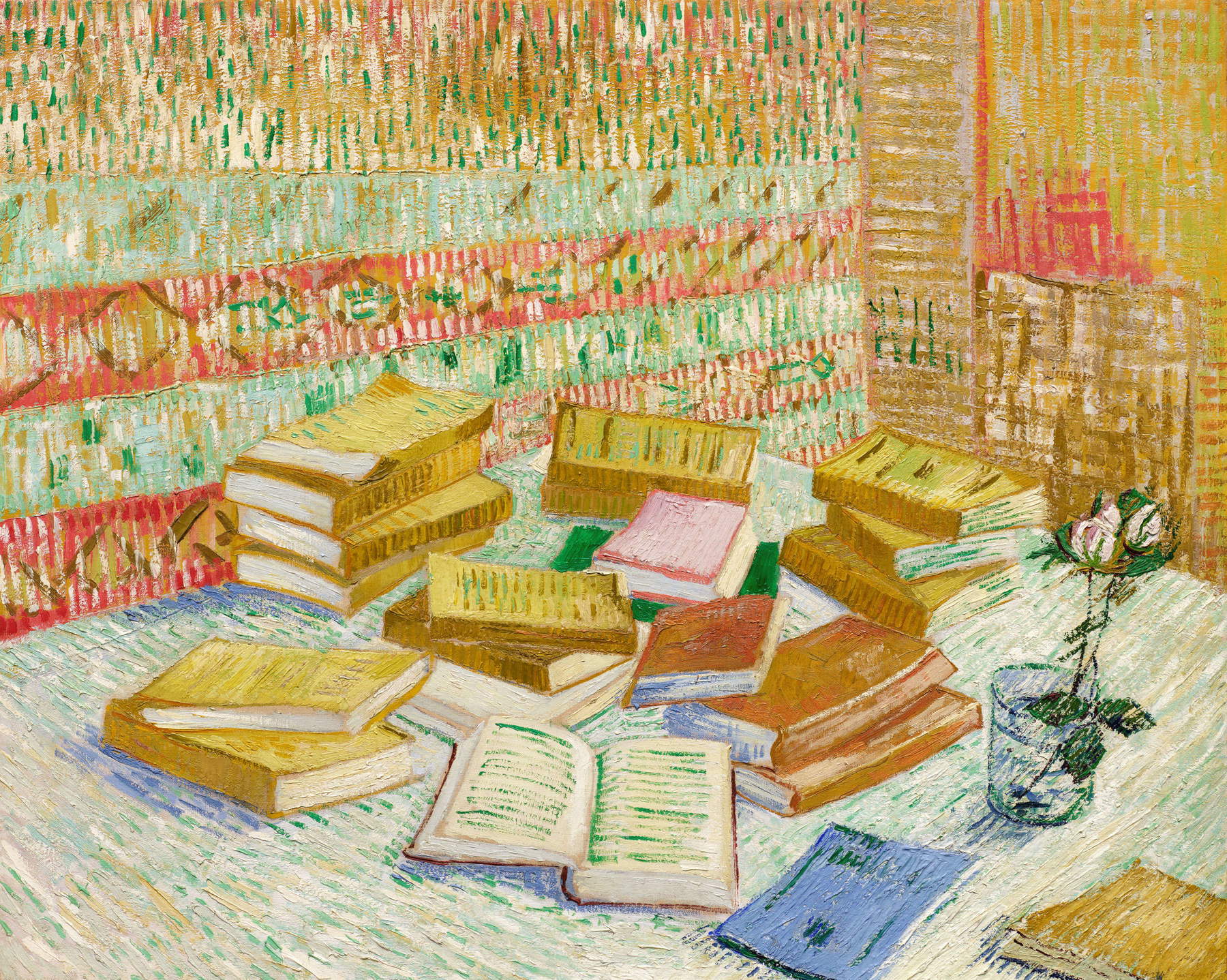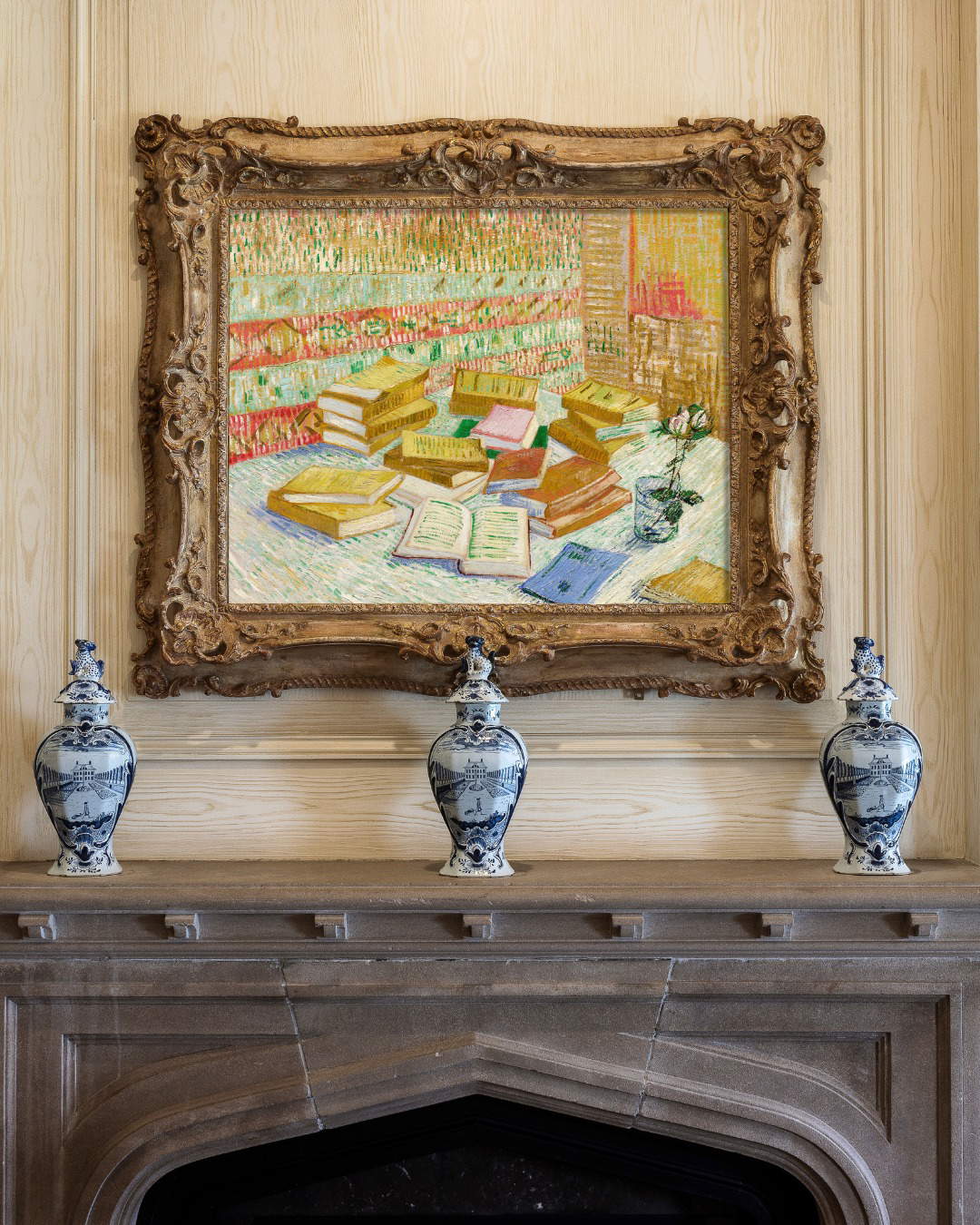An important work by Vincent van Gogh (Zunder, 1853 - Auvers-sur-Oise, 1890) will be featured in Sotheby’s Modern Evening Auction, scheduled for November 2025 in New York. It is Romans Parisiens (Les Livres jaunes), a rare and luminous still life painted in 1887 and estimated at around $40 million. The work comes to the market as the centerpiece of the auction in which the private collection of Cindy and Jay Pritzker, an entrepreneurial couple (Jay Pritzker bought the Hyatt Hotel chain in 1957, which has always remained in the family’s hands) who painstakingly built up, over nearly fifty years, a major art collection recognized as one of the finest in modern and Impressionist art still in private hands.
The painting, made by Van Gogh during his Parisian years, depicts a table covered with a number of books with yellow spines, recognizable as the then-popular Charpentier editions. More than just a still life, the work represents a symbolic self-portrait of the artist, who through personal objects liked to convey his identity and passions. It is no coincidence that Van Gogh chose precisely Romans Parisiens as one of only three paintings presented at his first official exhibition at the Salon des Indépendants in 1888: the exhibition marked a turning point that solidified his inclusion in the Parisian avant-garde.
The link between Van Gogh and books is well documented: a voracious reader, the Dutch painter found in literature not only a source of inspiration but a means of understanding society and his own role within it. It was precisely this dialogue between art and reading that was echoed in the Pritzker collection, where the painting occupied a prominent place in the family library. For Cindy Pritzker (Chicago, 1923 - 2025), a philanthropist, a lifelong supporter of libraries and a believer in the importance of education as an enrichment of public life, the work represented both a personal and civic symbol.

Alongside Van Gogh’s masterpiece, the Modern Evening Auction will feature other exceptionally valuable pieces from the Pritzker collection. Prominent among them is Henri Matisse’s Léda et le cygne, a monumental triptych in which the artist reinterprets classical myth through a bold and experimental vision. Matisse’s canvas testifies to the ability of Pritzker collecting to intercept works capable of combining formal innovation and deep cultural roots.
The collection also includes Paul Gauguin’s La Maison de Pen du, gardeuse de vache (1889), one of the seminal canvases of the Pont-Aven period, in which the French artist elaborated the Synthetist language that would influence twentieth-century art. Instead, from the Parisian context comes Max Beckmann’s Der Wels (Catfish) (1929), an allegorical work made during his years in France, characterized by a narrative and symbolic intensity that makes it an authentic tour de force of his production. The sale catalog also includes Ernst Ludwig Kirchner’s Hallesches Tor, Berlin (1913), one of the most impressive Berlin cityscapes still in private collection, a testament to the expressive power of the Die Brücke movement and its vision of the metropolis as a space of tension and transformation.
The horizon of the Pritzker collection is not limited to modern and impressionist painting, however. Works from different eras and cultures also find a place in the collection, testifying to an approach to collecting that is as personal as it is eclectic. Treasures include a rare enameled horse from the Tang Dynasty, a 15th-century portolano by Petrus Roselli, and a millefleur tapestry from Tournai from the late Middle Ages. Pieces that reveal the Pritzkers’ ability to look beyond market fashions, choosing works that can dialogue with their intellectual and aesthetic passions and live in the everyday life of their home.

The November auction thus promises to be one of the most relevant events on the international calendar, not only because of the quality of the works on offer, but also because of the personal history that accompanies them. Each piece reflects the collecting vision of Cindy and Jay Pritzker, built on a balance between historical importance and the ability to inspire the life of the viewer.
In this context, the central role of Romans Parisiens (Les Livres jaunes) seems entirely consistent. The work is not just a still life of books, but a symbol of transformation, culture and identity. Made at a crucial moment in Van Gogh’s artistic journey, it testifies to his openness to Parisian modernity and his ability to translate the intellectual ferment of the time into painting. Likewise, for the Pritzker family it represented a bridge between art and life, between individual passion and civic responsibility. The return to the market of a work of this magnitude is bound to attract the attention of collectors and museum institutions around the world. The $40 million estimate reflects both the rarity of the subject and the painting’s historical role in Van Gogh’s career. But beyond the figures, the auction will offer an opportunity to reread the path of an artist who through books found a way to narrate himself and his time, and of a family that saw in art and literature tools for collective growth and enrichment.
 |
| A still life by Vincent Van Gogh at auction at Sotheby's: a $40 million piece |
Warning: the translation into English of the original Italian article was created using automatic tools. We undertake to review all articles, but we do not guarantee the total absence of inaccuracies in the translation due to the program. You can find the original by clicking on the ITA button. If you find any mistake,please contact us.